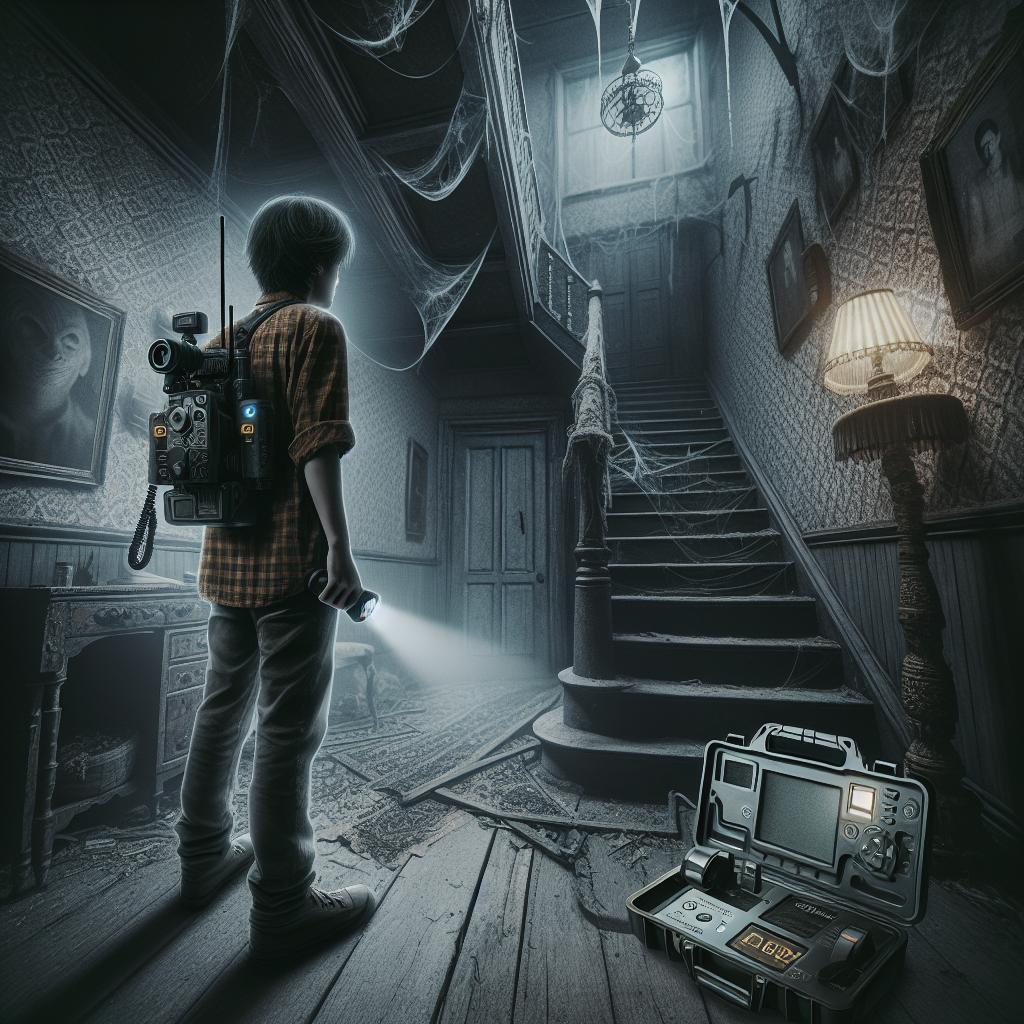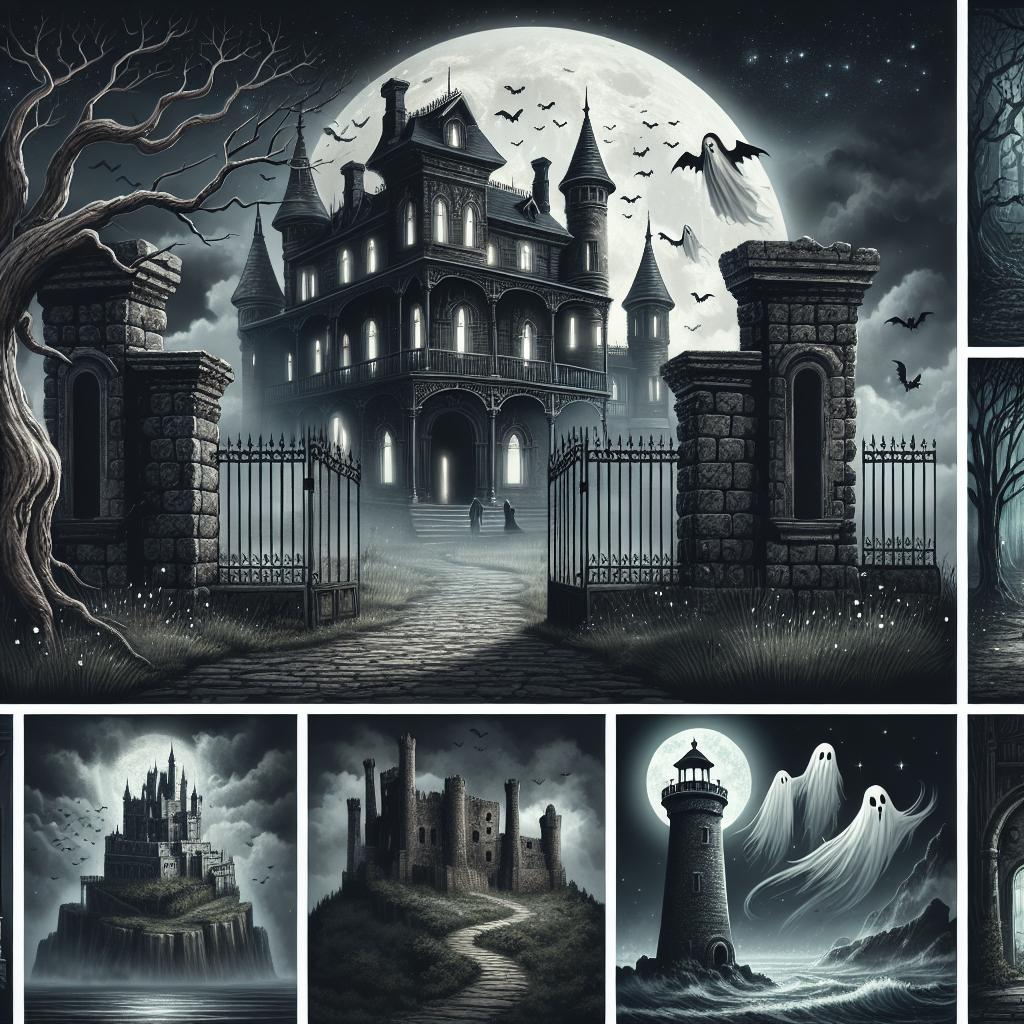GHOSTBUSTERS
THE CRITERION COLLECTION, a continuing series of both classics
and important contemporary films on Laserdisc, presents Ghostbusters
It was an inspired concept. Take three of the funniest men working in film today, turn them loose in the story of an all-powerful supernatural entity hell-bent on bringing New York to its knees, and add generous doses of the best special effects money can buy and then put the whole package into the hands of a gifted director with a proven track record for blockbuster comedy. The result — a megahit of the first order … Ghostbusters.
Rooted in the comic “ghost” picture tradition of Abbott and Costello and the Bowery boys, Ghostbusters broke ground by blending established elements of comedy and horror with the latest advances in high-tech special effects. The product was a cinematic alloy that would not only break boxoffice records but also win widespread critical acclaim.
The project originated with a script written by Saturday Night Live alumnus Dan Aykroyd. A card-carrying member of the American Society for Psychical Research, Aykroyd had for years been interested in paranormal activity. Inspired by that lifelong fascination, Aykroyd devised a premise that was packed with comedic possibilities. What if ghosts were real and a team of nuts-and-bolts pragmatists formed a company to deal with them matter-of-factly, as they might any other household pest.
Armed only with that premise and a half-completed script, Aykroyd nonetheless managed to arouse the interest of fellow Saturday Night Live expatriate Bill Murray and director Ivan Reitman. Reitman, who had worked with Aykroyd years before on a live television variety show and had directed Murray in Meatballs and Stripes, was the logical choice to head the project. Having produced the phenomenally successful National Lampoon’s Animal House, he was also one of the few filmmakers in Hollywood whose comedy credentials were both well-honed and thoroughly bankable.
Excited by the basic idea, Reitman enlisted Harold Ramis to collaborate with Aykroyd in developing that concept into a full-fledged script. An enormously gifted comedy writer and actor, Ramis had not only served as head writer on television’s acclaimed SCTV, he had also worked on the scripts for all three of Reitman’s previous hits. Ultimately, Ramis was recruited as the third Ghostbuster — a choice reunion with Bill Murray after their successful pairing in Stripes. Sigourney Weaver, eager to try her talents for the first time in a comedy, later signed on to complete the impressive cast.
Backed by such formidable talent and box office appeal, Reitman was able to secure a financial commitment from Columbia Pictures almost immediately — a remarkable feat considering there was as yet no script and no budget. The deal with Columbia had only one hitch — but a big one. The studio needed a major release for the summer of 1984. Reitman and his team had exactly one year to come up with a script, mount the production and complete the extensive and time-consuming visual effects.
Fortuitously, Richard Edlund — a preeminent member of the special effects community and a veteran effects supervisor at Lucasfilm’s Industrial Light and Magic — was at this time branching out on his own and looking for a project to launch his Boss Film effects facility. Ghostbusters, which would entail every kind of special effects technology from animated puppets to matte paintings and opticals, was the perfect project to initiate the new venture. Edlund’s facility was quickly equipped, staffed with a seasoned crew and launched into battle against the killer deadline.
With a final script in hand, Reitman and his production team — including co-producers Joe Medjuck and Michael Gross, production designer John De Cuir and cinematographer Laszlo Kovacs — gathered in New York in late October for three-and-a-half weeks of principal photography. Reassembling in Los Angeles for an additional nine weeks of shooting on The Burbank Studios’ soundstages and at various area locations, the show wrapped in early February, leaving Edlund and his crew less than four months in which to complete nearly two hundred post-production opticals.
In spite of the scope of the project and the excruciatingly tight schedule, every member of the production task force delivered — and delivered big. In its first week of release, Ghostbusters broke Columbia’s “best opening weekend” and “best opening week” records. Audiences loved the film’s mixture of offbeat comedy and dazzling visual effects. “Who ya gonna call?” became the summer’s most popular catch phrase. As record-breaking weeks went by, it became apparent that Ghostbusters was nothing less than a certified phenomenon, quickly climbing into the rarified “top ten” list of all-time box office attractions.
— DON SHAY

